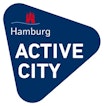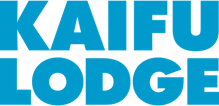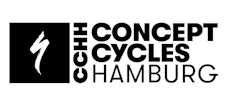6 Nutrition Basics for Triathletes
28 February, 2018

With all the nutrition information out there it's easy to overlook a solid foundation. Matt Dixon brings us back to basics.
by Matt Dixon
I've spent a lot of time hammering home to my athletes, pro and amateur alike, that they need to 'get the basics right.' Of course, we discuss and work on many of the finer details of our sport, such as technique, race fueling, strategy, etc. But many of the incremental gains in this sport are all built on successful basic habits. Ensuring that you dial in your most basic habits is an essential component to making progress in triathlon.
One of these basics is a solid platform of health supported by sound eating habits. So, let's dive into what this means for us. Remember, as I write this, the focus is on general eating—not on the calories consumed in and around exercise. I like to separate the fueling in training from our daily nutrition. So, how should we eat? Well, this is an area that I personally believe is made entirely too complicated with so many experts (and faux-experts) promoting all sorts of miracle cures and diets that claim to trim fat, boost energy, and provide some magic elixir for a better life. As a general rule of thumb—don't believe the bunk! And don't make it overly complicated. As endurance athletes we need to:
1. Eat plenty: For the overwhelming majority of us, our training hours demand a solid amount of daily calories to support that very training and allow for recovery and adaptations. You need to be an eating machine.
2. Avoid sugar: Arguably the worst component of the Western diet is the massive increase in sugar intake over the last generation. The only way to successfully restrict sugar is to avoid packaged/processed foods and to restrict straight sugary beverages, candy, etc.
3. Eat your protein and fats: The foundation of a quality diet includes a quality protein source and quality fat with every single meal. This means plenty of healthy oils (avoid vegetable and other processed oils), avocados, nuts, and seeds in support of meat, fish, and other lean proteins.
4. Make your carbohydrates nutritious: Avoid eating too much bread, pasta, and starchy carbohydrates and instead replace them with carbohydrates that hold high nutrient value. This includes quinoa, amaranth, vegetables, fruits, and more. Replacing pasta with a large quantity of fruits and veggies is a great place to start.
5. Moderation: Don't be a slave to your plan. Occasionally enjoy pizza, pasta, wine, or whatever your favorite dish may be, just try not to overdo it or make it a regular occurrence.
6. Breakfast: I believe breakfast is the foundation of successful daily eating. Make it a habit to always eat a healthy breakfast and make it your largest meal of the day. My favorite breakfast tip—if you like oatmeal, which is a great choice, add blackstrap molasses to it as your sweetener. It's a great source of iron, calcium, and magnesium and, while it is an acquired taste if it was good enough for my ancestors (well, my Dad), then it must be great for me… surely.
If you follow these habits and ensure that you are eating plenty to you support your lifestyle, then you will have a solid chance of success. Conceptually, this all seems very simple, but I realize some of you prefer real structure and a framework to help you make decisions. For structure, some of of the better options that I'm aware of include—The Whole 30 Diet, The QT2systems Core Diet, The Feed Zone, Paleo (although I would adapt plenty in here), and All Day Energy. Avoid falling for any of the promotions in books but draw from them for structure and recipe ideas.
When in doubt, seek out professional help from your coach or a sports nutritionist to build the best fueling plan for you.
Matt Dixon is the owner of purplepatch fitness.











.png?h=106&auto=format)







.png?h=106&auto=format)




